 | TODAY IN SCIENCE HISTORY
NEWSLETTER - 9 MARCH |
 On 9 Mar 1676, Zabdiel Boylston was born, the American physician who introduced smallpox inoculation into the American colonies. To learn of how he risked testing the technique of inoculation on his own son, persevered against bitter opposition to offer protection for his local community at a time of danger from smallpox, and statistics on his success, read this article on Zabdiel Boylston. On 9 Mar 1676, Zabdiel Boylston was born, the American physician who introduced smallpox inoculation into the American colonies. To learn of how he risked testing the technique of inoculation on his own son, persevered against bitter opposition to offer protection for his local community at a time of danger from smallpox, and statistics on his success, read this article on Zabdiel Boylston.
|
 On 9 Mar 1676, Zabdiel Boylston was born, the American physician who introduced smallpox inoculation into the American colonies. He, and Lady Mary Wortley Montagu, stand as iconoclastic figures in the historic battle against smallpox. Their faith in what had been known from folk practice in Turkey and Africa about inoculation saved Boston and London at a time of great need. Today's Science Store pick is The Speckled Monster: A Historical Tale of Battling the Smallpox Epidemic, by Jennifer Lee Carrell who brings to life a dramatic story of a heroic struggle against smallpox that started in the 18th century. New hardcover $22.00, or in paperback $10.98. Available Used from $0.02 (as of time of writing). On 9 Mar 1676, Zabdiel Boylston was born, the American physician who introduced smallpox inoculation into the American colonies. He, and Lady Mary Wortley Montagu, stand as iconoclastic figures in the historic battle against smallpox. Their faith in what had been known from folk practice in Turkey and Africa about inoculation saved Boston and London at a time of great need. Today's Science Store pick is The Speckled Monster: A Historical Tale of Battling the Smallpox Epidemic, by Jennifer Lee Carrell who brings to life a dramatic story of a heroic struggle against smallpox that started in the 18th century. New hardcover $22.00, or in paperback $10.98. Available Used from $0.02 (as of time of writing). Yesterday's pick: Otto Hahn: Achievement and Responsibility, by Klaus Hoffmann.
For picks from earlier newsletters, see the Today in Science Science Store home page. | |
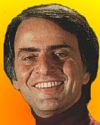
| "Scientists constantly get clobbered with the idea that we spent 27 billion dollars on the Apollo programs, and are asked “What more do you want?” We didn't spend it; it was done for political reasons. ... Apollo was a response to the Bay of Pigs fiasco and to the successful orbital flight of Yuri Gagarin. President Kennedy's objective was not to find out the origin of the moon by the end of the decade; rather it was to put a man on the moon and bring him back, and we did that."
- Carl Sagan, American astronomer and writer (9 Nov 1934 - 20 Dec 1996)  |
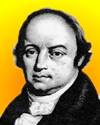 | "Whoever would not remain in complete ignorance of the resources which cause him to act; whoever would seize, at a single philosophical glance, the nature of man and animals, and their relations to external objects; whoever would establish, on the intellectual and moral functions, a solid doctrine of mental diseases, of the general and governing influence of the brain in the states of health and disease, should know, that it is indispensable, that the study of the organization of the brain should march side by side with that of its functions. " - Franz Joseph Gall, German anatomist and physiologist. (born 9 Mar 1758)  |
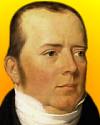
| "It appears, according to the reported facts, that the electric conflict is not restricted to the conducting wire, but that it has a rather extended sphere of activity around it .. the nature of the circular action is such that movements that it produces take place in directions precisely contrary to the two extremities of a given diameter. Furthermore, it seems that the circular movement, combined with the progressive movement in the direction of the length of the conjunctive wire, should form a mode of action which is exerted as a helix around this wire as an axis. "
- Hans Christian Oersted, Danish physicist and chemist. (born 9 Mar 1777)  |
| Before you look at today's web page, see if you can answer some of these questions about the events that happened on this day. Some of the names are very familiar. Others will likely stump you. Tickle your curiosity with these questions, then check your answers on today's web page. |
 |  A Soviet cosmonaut, born 9 Mar 1934, was the first man to travel into space (1961). A Soviet cosmonaut, born 9 Mar 1934, was the first man to travel into space (1961).  Can you name this cosmonaut? Can you name this cosmonaut?  |
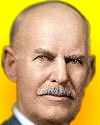 |  Edward Goodrich Acheson, born 9 Mar 1856, was an American inventor who discovered an abrasive which would be the second hardest substance (next to diamonds) known from this time for a half century. Acheson also perfected a method for making graphite. Edward Goodrich Acheson, born 9 Mar 1856, was an American inventor who discovered an abrasive which would be the second hardest substance (next to diamonds) known from this time for a half century. Acheson also perfected a method for making graphite.  What was this abrasive substance? What was this abrasive substance? |
 |  Hans Christian �rsted (1777-1851) was the physicist who discovered that electric current in a wire can deflect a magnetized compass needle, a phenomenon the importance of which was rapidly recognized and which inspired the development of electromagnetic theory. Hans Christian �rsted (1777-1851) was the physicist who discovered that electric current in a wire can deflect a magnetized compass needle, a phenomenon the importance of which was rapidly recognized and which inspired the development of electromagnetic theory.  What was his nationality? What was his nationality? |
 |  On 9 Mar of a certain year, the University of California at Berkeley and the Atomic Energy Commission officially announced the artificial production of mesons using the 184-inch cyclotron at the university's Radiation Laboratory. Time reported the discovery and hinted that the study of mesons might "lead in the direction of a vastly better source of atomic energy than the fission of uranium." On 9 Mar of a certain year, the University of California at Berkeley and the Atomic Energy Commission officially announced the artificial production of mesons using the 184-inch cyclotron at the university's Radiation Laboratory. Time reported the discovery and hinted that the study of mesons might "lead in the direction of a vastly better source of atomic energy than the fission of uranium."  In what decade was the production of mesons announced? In what decade was the production of mesons announced? |
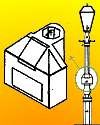
|  On 9 Mar 1858, a patent was issued to Albert Potts of Philadelphia for a simple metal box designed to attach to a lamppost. By August, these boxes were found along the streets of Boston, Mass., and New York City, N.Y. His patent described the "object of this improvement is to afford greater facilities to the inhabitants of large cities..." On 9 Mar 1858, a patent was issued to Albert Potts of Philadelphia for a simple metal box designed to attach to a lamppost. By August, these boxes were found along the streets of Boston, Mass., and New York City, N.Y. His patent described the "object of this improvement is to afford greater facilities to the inhabitants of large cities..."  What was the purpose of his invention? What was the purpose of his invention? |
When you have your answers ready to all the questions above, you'll find all the information to check them, and more, on the March 9 web page of Today in Science History. Or, try this link first for just the brief answers.
Fast answers for the previous newsletter for March 8: Otto Hahn; Ferdinand Count von Zeppelin; volcanoes; the decade including the year 1946. |
 If you enjoy this newsletter, the website, or wish to offer encouragement or ideas, please send feedback by using your mail reader Reply button. If you enjoy this newsletter, the website, or wish to offer encouragement or ideas, please send feedback by using your mail reader Reply button. |
--
If you do not want to receive any more newsletters,
Unsubscribe To update your preferences and to unsubscribe visit
this link 


 On 9 Mar 1676, Zabdiel Boylston was born, the American physician who introduced smallpox inoculation into the American colonies. To learn of how he risked testing the technique of inoculation on his own son, persevered against bitter opposition to offer protection for his local community at a time of danger from smallpox, and statistics on his success, read this article on Zabdiel Boylston.
On 9 Mar 1676, Zabdiel Boylston was born, the American physician who introduced smallpox inoculation into the American colonies. To learn of how he risked testing the technique of inoculation on his own son, persevered against bitter opposition to offer protection for his local community at a time of danger from smallpox, and statistics on his success, read this article on Zabdiel Boylston. 



 A Soviet cosmonaut, born 9 Mar 1934, was the first man to travel into space (1961).
A Soviet cosmonaut, born 9 Mar 1934, was the first man to travel into space (1961). 
 Edward Goodrich Acheson, born 9 Mar 1856, was an American inventor who discovered an abrasive which would be the second hardest substance (next to diamonds) known from this time for a half century. Acheson also perfected a method for making graphite.
Edward Goodrich Acheson, born 9 Mar 1856, was an American inventor who discovered an abrasive which would be the second hardest substance (next to diamonds) known from this time for a half century. Acheson also perfected a method for making graphite.  What was this abrasive substance?
What was this abrasive substance? 
 Hans Christian �rsted (1777-1851) was the physicist who discovered that electric current in a wire can deflect a magnetized compass needle, a phenomenon the importance of which was rapidly recognized and which inspired the development of electromagnetic theory.
Hans Christian �rsted (1777-1851) was the physicist who discovered that electric current in a wire can deflect a magnetized compass needle, a phenomenon the importance of which was rapidly recognized and which inspired the development of electromagnetic theory.  What was his nationality?
What was his nationality? 
 On 9 Mar of a certain year, the University of California at Berkeley and the Atomic Energy Commission officially announced the artificial production of mesons using the 184-inch cyclotron at the university's Radiation Laboratory. Time reported the discovery and hinted that the study of mesons might "lead in the direction of a vastly better source of atomic energy than the fission of uranium."
On 9 Mar of a certain year, the University of California at Berkeley and the Atomic Energy Commission officially announced the artificial production of mesons using the 184-inch cyclotron at the university's Radiation Laboratory. Time reported the discovery and hinted that the study of mesons might "lead in the direction of a vastly better source of atomic energy than the fission of uranium."  In what decade was the production of mesons announced?
In what decade was the production of mesons announced? 
 On 9 Mar 1858, a patent was issued to Albert Potts of Philadelphia for a simple metal box designed to attach to a lamppost. By August, these boxes were found along the streets of Boston, Mass., and New York City, N.Y. His patent described the "object of this improvement is to afford greater facilities to the inhabitants of large cities..."
On 9 Mar 1858, a patent was issued to Albert Potts of Philadelphia for a simple metal box designed to attach to a lamppost. By August, these boxes were found along the streets of Boston, Mass., and New York City, N.Y. His patent described the "object of this improvement is to afford greater facilities to the inhabitants of large cities..."  What was the purpose of his invention?
What was the purpose of his invention?  If you enjoy this newsletter, the website, or wish to offer encouragement or ideas, please send feedback by using your mail reader Reply button.
If you enjoy this newsletter, the website, or wish to offer encouragement or ideas, please send feedback by using your mail reader Reply button. 

Δεν υπάρχουν σχόλια:
Δημοσίευση σχολίου